

This guide has not yet been updated for the current season. Please keep this in mind while reading. You can see the most recently updated guides on the browse guides page
Vote received! Would you like to let the author know their guide helped you and leave them a message?
|
Recent updates:
2024/1/29: Guide is current as of Patch 11.1, "Year 11."
 Revision History Revision History |

|
ADC (Carry) Starters
|
 ADC (Carry) Starters
ADC (Carry) Starters|
Jungler Starters
|
 Jungler Starter Items
Jungler Starter Items|
Mid Starters
|
 Mid Starters
Mid Starters|
Solo Starters
|
 Solo Starters
Solo Starters|
Support Starters
|
 Support Starters
Support Starters|
Special / Off-Role Starters
|
 Special / Off-Role Starters
Special / Off-Role Starters|
Early Level Movement Scaling
|
|
Universal Movement Speed Items
|
|
Viability, Usage & Status: High Viability. While it requires using a god that has healing in their kit, it provides good physical protection and a nice boost to movement speed that can be used quite often. This provides CDR and a boost in power as well, providing well-rounded defensive and offensive functionality. | |
|
Viability, Usage & Status: Situational Viability. Only functions well for gods that are able to heal others, but provides some helpful protections that should make it a supportive consideration. An item you can consider for select gods with teammate healing, such as | |
|
Viability, Usage & Status: High Viability. The draw is the passive relic CD effect which is particularly great for It's very cheap and has high health, with some added CDR, which makes it a pretty well-balanced item. Just make sure you're using those relics often to get max effectiveness. | |
|
Viability, Usage & Status: Medium Viability. It has good health and protections, but it requires kills / assists for temporary stacking of MS and AS, making it better for laning stages than late-game situations. This item is not currently in favor, due to an influx of new items and a revamp of other items that saw their effectiveness increase. This could see a buff to bring it more in line with other items. Can be useful in non-Conquest teamfight modes like Slash or Arena. | |
|
Viability, Usage & Status: Low Viability. Utility option for basic attackers to add anti-heal function. While it can be nice to decrease enemy healing, this item has no power and while the attack speed boost is potentially large, it's generally overshadowed by the | |
|
Viability, Usage & Status: Medium Viability. Considered a support starter but its stats are somewhat mediocre. More functional in teamfight modes. This item provides some decent gold gain and health/mana sustain, but is touted for the movement and attack speed it can provide situationally. It's meant for aggressive play but when minions aren't being cleared, it's not providing much benefit. The upgrades for this starter also have an offensive focus, which are often overshadowed by more defensive options. | |
|
Viability, Usage & Status: Medium Viability. One of the upgrade options for War Flag, it provides enhanced stats of the base item but comes with the same issues. If you like what War Flag brings in the early game, you might feel the same about this upgrade. If you find War Flag's passive benefits too situational, you'll feel the same about this as well. | |
|
Viability, Usage & Status: High Viability. Defensive utility option for Tanks or Bruisers, as a counter to slows. Picked up late for added utility, especially in teamfights. For a low price, you get added movespeed and some tankiness to enemy slows. The passive shares the slow immunity and MS with nearby teammates, making it quite helpful. |
|
Magical Movement Speed Items
|
|
Viability, Usage & Status: High Viability. Mostly an offensive item that provides power and % pen, with a unique passive giving some HP5 and movement speed. This provides the same base % penetration as | |
|
Viability, Usage & Status: High Viability. Expensive, but provides very solid power and a ton of utility. Great for rotations in Conquest. Some rush this early in Conquest for the huge boost in power, decent mana, and strong rotation speed. Otherwise, it's a solid mid/late game item if you want offensive potential with MS. | |
|
Viability, Usage & Status: Situational Viability. Used by magical gods with strong basic attack function. This item grants 6 seconds of high mobility for boxing when basic attacking, before requiring a 25 second CD to become available again. Can see some good effect for some magical gods such as | |
|
Viability, Usage & Status: Situational Viability. Optional item for healers to enhance group healing. Not only does this item enhance healing, but the added move speed and health provide good survival utility for healing mages, since they usually don't have escapes. Usually picked up after movement speed and CDR items, but can be purchased late if other items are preferred earlier. |
|
Physical Movement Speed Items
|
|
Viability, Usage & Status: Medium Viability. Mid to late-game AS and pen option for basic-attackers that adds situational mobility. The combination of power, attack speed, % penetration, and enhanced mobility makes this a functional item for basic attackers, but it's often overshadowed by other basic attack items. | |
|
Viability, Usage & Status: Medium Viability. Crit item that provides situational (possibly inconvenient) added buffs. While the general stats are helpful, the passive requires you to pick up a deployable to gain the added benefits (MS and more crit chance), which can be difficult or annoying while in the middle of a fight. | |
|
Viability, Usage & Status: High Viability. Formerly called Wind Demon, this is a well-rounded item for crit builds. This item provides well rounded offensive stats with added % penetration and movement speed for a time when you critically strike. | |
|
Viability, Usage & Status: Situational Viability. Strategic item to aid minion clear for gods that have weak clearing abilities or want to save their abilities for fighting gods. Core for certain Assassins in the Jungle, and can also be seen in the Solo lane. Not typically recommended for teamfight modes. This is a specialized item for Assassins in the Jungle, allowing for quick and efficient camp clear without the need to use abilities. This can ease mana consumption and allow abilities to be ready for enemy god encounters, and is essential for some gods whose abilities don't clear camps well (e.g. Solo-laners also pick this up situationally in the early game for quicker camp clear and early pressure. WARNING: Assassins & Warriors only! Cannot buy for Hunters! | |
|
Viability, Usage & Status: Situational Viability. Strategic option for basic attacking Assassins and Warriors, specifically to help stay close to enemies. Picked up at all stages of the game. This is a specialized attack speed item, allowing you to move at full speed even when basic attacking (as long as you connect), which is particularly helpful when boxing. Popularly used for WARNING: Assassins and Warriors only! Cannot buy for Hunters! | |
|
Viability, Usage & Status: High Viability. High % pen option for gods that utilize both abilities and basic attacks. This item provides well-rounded stats in a main option for % pen. Provides some lifesteal, with a boost of power and lifesteal the more abilities you have on cooldown. This makes it great for continuing to engage with basics after using a lot of your abilities. | |
|
Viability, Usage & Status: Medium Viability. Utility item for Assassins that are looking to jump from target to target without being detected. The power is good, but the flat pen isn't that high, so you're picking this item specifically for the passive, which gives you a stealth and MS boost effect for a short time after killing an enemy. Requiring you to get the last hit in a teamfight might make this niche for late-game use, but it can allow you to sneak around without getting targeted. |
|
Magical Stacking Items
|
|
PASSIVE: You permanently gain 6 Mana per Stack, and receive 5 Stacks for a god kill and 1 Stack per 450 Damage Dealt to minions or 225 Damage Dealt to gods. You gain Magical Power equal to 4% of your Mana from items. At 100 Stacks this item Evolves, gaining 10 Magical Penetration and increasing the Magical Power gained from Mana to 7%.[/i]
Viability, Usage & Status: High Viability. Helpful for gods looking for good power and a huge mana pool. This is a popular pick for almost any Mid-Lane / Damage Mage looking for high power and a mana pool that essentially guarantees they won't run out. It should be built early to build stacks. If you need some early CDR, grab *NOTE* The true power contribution of this item depends on the total mana of the god & items chosen. You can easily see a final power contribution from this item at over 160 power. In modes where backing often is common, the huge mana pool isn't needed quite as badly, and other, non-stacking items might be suggested. | |
|
PASSIVE: You permanently gain +3 Health and +0.25 Magical Power per Stack, and receive 1 stack per 550 Damage Dealt to or taken from minions or 275 Damage Dealt to or taken by gods. At 100 stacks this item Evolves, gaining 10% Magical Penetration.
Viability, Usage & Status: High Viability. Interesting set of stats, especially for a stacking item. The power is nice and the added health provides good survivability. This item sits in an interesting spot, providing good power and health, along with % penetration. Being a stacking item, you typically want to purchase it early. This is a good consideration for a bruiser Mid-lane or Solo mage. |
|
Physical Stacking Items
|
|
PASSIVE: You permanently gain 0.4 Physical Power, 0.2 Physical Penetration, and 0.15% Physical Lifesteal per Stack, and receive 1 Stack per 600 Damage Dealt to minions or 300 Damage Dealt to gods. At 50 stacks this item Evolves, gaining 5 Physical Penetration.
Viability, Usage & Status: High Viability. Early option for health sustain (via lifesteal) and good power as stacks are built. Lacks attack speed. "Devo's" is most commonly built on Hunters as the 1st main item in a build. For the basic-attacking hunter, this provides good stats for the cost. It's not usually suggested on more ability-reliant hunters or other classes. The 15 flat penetration it provides at max stacks is helpful for early damage and overall damage against other squishy gods. | |
|
PASSIVE: You permanently gain 15 Mana per stack, and receive 1 stack per 700 Damage Dealt to minions or 35 Damage Dealt to gods. You gain Physical Power equal to 2% of your Maximum Mana. At 50 Stacks this item evolves, gaining 10 Physical Penetration.
Viability, Usage & Status: High Viability. Standard pick for an ability user looking for a huge mana pool. Picked up mostly by ability-reliant gods that rely on burst damage, or hybrid gods that use both basic attacks and abilities often. Can be seen in both the Carry (ADC) and Jungler roles, as well as for strong damage-scaling Solos such as This item provides an incredible pool of mana as it stacks, making it a good item for modes where longer stays in-lane are important and mana use is potentially high. Since it doesn't provide health sustain, it's a better choice if the god has some healing within their kit; otherwise, they'll likely have to supplement with specific lifesteal items later, such as Note that the indicated base and full stack power contribution is only that of the item itself. The god's base mana and any additional items providing mana will increase the total power gained by Transcendence's passive. |
|
Universal Protection / Health Items
|
|
Magical Protection Items
|
|
Physical Protection Items
|
 Calculations and Examples
Calculations and Examples Further Discussion on Penetration vs. Protection Reduction
Further Discussion on Penetration vs. Protection Reduction Inters3ct's Video Guide Explaining Penetration, Protections and Mitigations
Inters3ct's Video Guide Explaining Penetration, Protections and Mitigations Gods with Protection Reduction or Penetration Skills
Gods with Protection Reduction or Penetration Skills|
Pros
|
Cons
|
|
|
|
Pros
|
Cons
|
|
|
|
Magical Protection Reduction Items
|
|
Viability, Usage & Status: High Viability. Huge mid-game damage for basic-attacking Mages. This is an essential penetration item for Mage ADCs focusing on basic attack damage, such as | |
|
Viability, Usage & Status: High Viability. Aggressive item for tanks with lots of CC to apply protection reduction to their targets. Solid tank item with offensive function, providing health, balanced protections and some mana sustain. This item now scales fairly well into the late-game due to the passive decreasing protection reductions to affected enemies. | |
|
Viability, Usage & Status: High Viability. Good magical protection item with some offensive function for aggressive tanks. Because it applies magical protection reduction, it's best used by magical tanks, and specifically those that are looking to front-line the enemy so they can apply the aura. Also provides some CC reduction and high MP5. |
|
Magical Penetration Items
|
|
Viability, Usage & Status: High Viability. Early stacking item for high mana. This is a stacking item that should be built early to gain the stacks. Once completed, you should have enough mana that you'll virtually never run out. Better for bigger maps like Conquest. | |
|
Viability, Usage & Status: High Viability. Utility offensive item that is often built in the mid portions of a build. Building earlier helps gain stacks. This item provides strong % pen and is best considered as a higher-utility version of You typically want to build it before the late stages of a build for the stacks. Gives offensive gods some level of added sustain and survivability, while also being great at damaging tanks. | |
|
Viability, Usage & Status: High Viability. Anti-healing counter item. This is a strong counter item to healers of all types. Good to pick up in the mid-game, and the flat pen is effective against squishier targets. | |
|
Viability, Usage & Status: High Viability. Functional item for high power and movement. This is an item that some gods can take good advantage of due to the boost of speed typically gained from clearing minion waves and jungle camps. Can be especially useful for gods that lack mobility in their kits. | |
|
Viability, Usage & Status: Medium Viability. Situational offensive function for healers. This is an item that should only be picked up by gods that can heal others, and provides additional offensive function based on how much health your teammate is missing. Rarely used due to the niche function. | |
|
Viability, Usage & Status: High Viability. Main penetration / anti-tank function. This can be used as a main penetration item for ability-users against tanks, where it will deeply cut through their protection. Best to pick up in the late game. | |
|
Viability, Usage & Status: High Viability. Mid to late-game damage item for mages, functional boost for healers with low health teammates. This expensive item provides high power, with a significant boost in power application toward low health targets. This power converts to bonus damage to help finish low health enemies off, while on the flipside, it can boost heal scaling for low health teammates. Due to the strength of the stats, it can be purchased fairly early in a build, but due to the high cost, is easier to purchase later. | |
|
Viability, Usage & Status: High Viability. Mid to late-game damage item for mages, niche use for aggressive guardians. The combination of power, CDR, and flat penetration is useful for basically any magical god looking for extra damage. | |
|
Viability, Usage & Status: Medium Viability. Provides decent base stats for the user, with added lifesteal and a small damage increase for all teammates that attack the affected target. Decent universal offensive item that provides bonus damage that can be helpful in teamfights, but the bonus damage is fairly minor. | |
|
Viability, Usage & Status: High Viability. Mid to late-game CDR + burst item for mages. This item provides some well-balanced stats, but the passive interaction with the ultimate means it's not going to be extremely effective for all gods. Great for gods that initiate with ults and immmediately follow up with other damaging abilities. | |
|
Viability, Usage & Status: Low Viability. Utility option for basic attackers to add anti-heal function. While it can be nice to decrease enemy healing, this item has no power and while the attack speed boost is potentially large, it's generally overshadowed by the | |
|
Viability, Usage & Status: High Viability. Functional as the 2nd lifesteal item for select gods, and possibly as a 1st lifesteal item for gods that already have lifesteal in their kits. Is often seen in the middle to late portions of a build. There are specific gods that will get the best use out of this item. Magical ADCs use this well, but the most well-known user of this item is [[Anubis], who relies on lifesteal to stay alive in most engagements. The passive lifesteal boost can partially counteract anti-heal. | |
|
Viability, Usage & Status: High Viability. Interesting set of stats, especially for a stacking item. The power combined with the health is functional for a bruiser. This remade item provides a variety of offensive stats while also adding a good chunk of health to support a bruiser build. Build early to gain the stacks. |
|
Physical Protection Reduction Items
|
|
Viability, Usage & Status: High Viability. Mid / late-game basic attacker's option. Popular penetration-type item for basic attackers. Requires stacking from basic attacks to gain full function. | |
|
Viability, Usage & Status: High Viability. Aggressive item for tanks with lots of CC to apply protection reduction to their targets. Solid tank item with offensive function, providing health, balanced protections and some mana sustain. This item now scales fairly well into the late-game due to the passive decreasing protection reductions to affected enemies. | |
|
Viability, Usage & Status: High Viability. Aggressive tank item. This revived item is great to provide some physical protection, health and HP5, but the unique aspect of this item is the aura of physical protection reduction, allowing you and other physical teammates to deal more damage. |
|
Physical Penetration Items
|
|
Viability, Usage & Status: Medium Viability. Mid to late-game AS and pen option for basic-attackers that adds situational mobility. The combination of power, attack speed, % penetration, and enhanced mobility makes this a functional item for basic attackers, though it's not often preferred over the many other available options. | |
|
Viability, Usage & Status: High Viability. Anti-heal for mid to late game ability-reliant gods. High power and flat pen combined with an anti-heal effect is a great offensive counter to a self or group healer. Often a good choice for a Warrior, to counter an enemy Solo-Laner such as | |
|
Viability, Usage & Status: High Viability. Formerly called Wind Demon, this is a well-rounded item for crit builds. This item provides well rounded offensive stats with added % penetration and movement speed for a time when you critically strike. | |
|
Viability, Usage & Status: High Viability. Strong penetration item for gods that rely on basic attacks. This builds off the same tree as | |
|
Viability, Usage & Status: High Viability. Hunter-specific, offensive utility for teamfights. This item provides good power, along with high CDR, some crit chance and % pen, providing solid stats for hunters that want CDR that's especially helpful for more ult use. The passive will find better use in a teamfight, as it creates a crit debuff on affected enemies, allowing ALL teammates the chance to deal critical strikes. However, the main draw will be for the main stats. | |
|
Viability, Usage & Status: High Viability. Strong aggression with burst damage potential, especially against high-health targets. This is a strong item that is typically built late game, due to the high price and the stronger effectiveness against high-health targets. Best for gods that rely heavily on ability damage, and more effective with a full damage build. | |
|
Viability, Usage & Status: High Viability. Great damage boost for gods that attack cancel. Provides bonus damage on basic attacks performed immediately after using abilities. Along with CDR and penetration, it makes this a key damage booster for select gods that use both basics and abilities (mainly Assassins such as | |
|
Viability, Usage & Status: High Viability. Early to mid-game CDR for ability-reliant gods. People generally buy this for the CDR to help spam their abilities, not for the penetration it brings, which is just an added bonus. Usually picked up in the early to mid game, and is not recommended for most basic attackers. | |
|
Viability, Usage & Status: High Viability. High % pen option for gods that utilize both abilities and basic attacks. This item provides well-rounded stats in a main option for % pen. Provides some lifesteal, with a boost of power and lifesteal the more abilities you have on cooldown. This makes it great for continuing to engage with basics after using a lot of your abilities. | |
|
Viability, Usage & Status: Medium Viability. Utility item for Assassins that are looking to jump from target to target without being detected. The power is good, but the flat pen isn't that high, so you're picking this item specifically for the passive, which gives you a stealth and MS boost effect for a short time after killing an enemy. Requiring you to get the last hit in a teamfight might make this niche for late-game use, but it can allow you to sneak around without getting targeted. | |
|
Viability, Usage & Status: High Viability Late-game, high attack speed item that provides benefit from overcapping attack speed. This item sees the most benefit from builds building high attack speed and incorporating | |
|
Viability, Usage & Status: Medium / High Viability. Power + lifesteal/sustain item for hybrid basic / ability attackers. This is an interesting item that is provides lifesteal from abilities (e.g. ability-reliant hunters, some assassins). Standard physical lifesteal only allows lifesteal from basic attacks. Although it's a stacking item, it won't take long to evolve, as ANY nearby death (friend or foe, including minions) will provide stacks. That said, it's used very situationally and mainly in the Solo lane, with some Junglers finding some use as well. Without providing any protections, it's used early for the sustain and to maintain pressure. | |
|
Viability, Usage & Status: High Viability. Mid to late-game damage option for hybrid gods that provides strong bonus damage. This is a mid to late-game pickup for gods that use both basics and abilities, providing a great combination of damage-focused stats. Due to its passive scaling, it's most effective in high-power builds. | |
|
Viability, Usage & Status: High Viability. Specific anti-tank function. The main benefit is for ability-users against tanks, where it will deeply cut through their protection. The passive can allow for penetration past the 40% cap. Best to pick up in the late-game. | |
|
Viability, Usage & Status: Low Viability. Utility option for basic attackers to add anti-heal function. While it can be nice to decrease enemy healing, this item has no power and while the attack speed boost is potentially large, it's generally overshadowed by the |
|
Universal Defensive / Utility CDR Items
|
|
Viability, Usage & Status: High Viability. Functional protection and CDR option for tanks that heal. This item is similar to BoV, providing good physical protection and mana, but while it trades off a bit of CDR, it gains high utility via a boost in MS and power triggered by your healing. | |
|
Viability, Usage & Status: High Viability. Anti-physical item with a huge boost in mana pool and CDR. This is a physical protection item for tanks, specifically for the mana pool and the CDR. It is usually picked up fairly early in a build. In extreme situations, can be considered by Mages as an alternative to It has 2 glyph options for added effect, making it quite appealing. | |
|
Viability, Usage & Status: Situational Viability. Can provide great extra CDR for very specific gods. This is one of the upgrade options of the Jungle starter | |
|
Viability, Usage & Status: High Viability. Well-rounded Jungle starter upgrade with CDR and penetration. The other | |
|
Viability, Usage & Status: Medium Viability. Can provide helpful, additional healing support to teammates. Gods picking this up need to be able to easily heal other teammates. Provides pretty good general stats including high MP5 and CDR, but the passive effect has situational function, due to the need to pick up the drops, which can be inconvenient in the middle of a fight. | |
|
Viability, Usage & Status: High Viability. Great anti-magical item with great mana sustain. This may be the most balanced anti-magical protection item. It provides some of everything...high protection, a bit of health, great mana sustain, and a passive that situationally gives you better than 20% CDR for some abilities. | |
|
Viability, Usage & Status: High Viability. Strong early / mid item for ability users to counter physical enemies. The bonus damage the passive provides allows this to be a functional item for boxing, both reducing damage intake and increasing damage output. Helpful early game in the Solo lane. | |
|
Viability, Usage & Status: Situational Viability. Only functions well for gods that are able to heal others, but provides some helpful protections that should make it a supportive consideration. The stats aren't bad, but the protections provided to you and teammates you affect are not very high. Can still be helpful and comes at a low price so can see situational use for gods that can quickly and easily apply healing to multiple teammates, such as | |
|
Viability, Usage & Status: High Viability. Balanced Protections w/ a passive effect to counter enemy CC. Decent balanced protections accompany the CDR. The specific appeal here lies in the passive effect, which allows you to absorb/cancel a single hard CC effect once every 70 seconds, which also gives you an additional second of CC immunity. More specifically, however, is that this offers 2 glyph items, 1 for offensive aggression and 1 that can protect nearby teammates from CC as well. | |
|
Viability, Usage & Status: High Viability. Expensive but effective late-game protection item with utility survival function. The balanced protections are higher than | |
|
Viability, Usage & Status: High Viability. Reasonably-priced consumable (500 gold) for mid and late-game boost. If you're able to play it reasonably safe and have good teamwork, getting this 5 minute consumable can provide a good payoff. At the 10-minute mark (when this item unlocks), you won't have maxed CDR, and the power boost is helpful, especially for gods with high-scaling abilities. The availability of this item means you don't necessarily have to get a full 40% CDR from items if you're okay with this consumable. | |
|
Viability, Usage & Status: High Viability. Mid / late-game protection option for tanks looking for a high boost to CDR. This is a solid pickup for tanks looking for a large boost to CDR, while also getting some protections. The shield gained upon ulting is very functional for teamfights. As it doesn't provide any health or mana sustain, it's better after some those are purchased. Note the functionality of when the ult activates; it only activates when the ult has ended. This can create weird, non-synergistic function for certain gods. A big draw is that this offers 2 glyph upgrades for additional protections / damage. | |
|
Viability, Usage & Status: High Viability. Strong option providing balanced protections, CDR, and a constant mitigation effect. Note that the max stacks make this item very strong, but it requires stacking to reach there, which can be a while depending on the situation. At full stacks, and especially with a high protection build, can give you great damage mitigation. | |
|
Viability, Usage & Status: Situational Viability. Interesting starter/upgrade for Guardians/Warriors to deal high damage in off-meta roles. This item is only purchasable by Guardians and Warriors, and allows them to deal bonus damage as long as they've built enough power from items. It is not a common pickup and is usually picked up when people are just looking to have fun with off-meta picks. | |
|
Viability, Usage & Status: High Viability. Popular with Supports wanting to use teamfight relics often. Best and most common use of this item will be for gods that are looking for a lot of added utility, due to the high health, CDR, CC reduction, and movement speed. The passive takes a significant amount of cooldown time off of relics, which can provide some great function late-game in teamfights. Almost a core item in teamfight modes for gods like A major draw is that this offers 2 glyphs, one of which ( | |
|
Viability, Usage & Status: Low Viability. Increases max CDR limit at the expense of other stats. This is an interesting item that allows you to increase your CDR past the cap of 40%. 10% extra isn't all that much, and you have to invest so much into CDR items that you likely miss out on other helpful stats. Not typically recommended except for funsies. | |
|
Viability, Usage & Status: High Viability. Universal protection function, anti-CC. This provides a great balance of stats with great anti-CC function, useful for almost any tank. A big draw is the passive's ability to situationally mitigate a good portion of incoming damage. |
|
Magical CDR Items
|
|
Viability, Usage & Status: High Viability. Highest CDR in an offensive magical item. The somewhat high price makes it a better pickup in the mid to late-game. The CDR it provides is invaluable, and with the passive, provides better than 20% CDR equivalence. | |
|
Viability, Usage & Status: High Viability. Well-rounded item for basic attacking mages, providing hybrid functionality due to the added CDR along with added burst damage function. This item is great for later portions of a match for mages that want added attack speed. It counts as a hybrid item due to the CDR, and it also has burst damage potential from the passive, stacked and applied by basics. | |
|
Viability, Usage & Status: Situational Viability. Utility CDR item for group lifesteal and power. This and | |
|
Viability, Usage & Status: High Viability. Utility lifesteal item for burst damage, survivability, and minor team healing. This item is focused a bit on utility since it also has lifesteal and situational bonus damage output. The burst damage it provides at full stacks is helpful, but to get enough healing out of it, it's better for gods that have low CDs on their damaging abilities. | |
|
Viability, Usage & Status: High Viability. Mid-game pen option for damage boost. The combination of power and flat penetration is useful for basically any mage looking for extra damage, especially in the earlier stages of a match due to the flat penetration. Many will want to pick this up, but you might consider skipping this item if you need to counter a healer (in which case, you'd | |
|
Viability, Usage & Status: High Viability. Mid to late-game CDR + burst item for mages. This item provides some well-balanced stats, but the passive interaction with the ultimate means it's not going to be extremely effective for all gods. Great for gods that initiate with ults and immmediately follow up with other damaging abilities. | |
|
Viability, Usage & Status: High Viability. Popular starter item for early CDR. Both upgrades provide CDR plus other benefits. |
|
Physical CDR Items
|
|
Viability, Usage & Status: Medium Viability. Unique offensive utility for offensive gods (e.g. Conquest Jungler) looking for easier ganking potential after ulting. This item provides high power and some CDR. The passive is best used to track and kill retreating enemies, or to surprise an unsuspecting enemy. Great for gods that start a fight with their ults. | |
|
Viability, Usage & Status: High Viability. Early item for Solo-laners/tanks. This revived item provides good power, health and mana, along with situational CDR or a huge MP5 boost to make sure you never run out of mana for long. While the stats are generally good, its effectiveness falls off late when you have more base mana and MP5 from other items, so consider replacing it then. | |
|
Viability, Usage & Status: Situational Viability. Functional utility for physical team healers. This item provides well rounded utility stats, including some power, health, MP5, and CDR. The interesting features are the passive and aura, which increases healing and provides nearby teammates with CC reduction and a bit of movement speed. It should only be purchased by gods that can heal others, such as | |
|
Viability, Usage & Status: High Viability. Hunter-specific, offensive utility for teamfights. This item provides good power, along with high CDR, some crit chance and % pen, providing solid stats for hunters that want CDR that's especially helpful for more ult use. The passive will find better use in a teamfight, as it creates a crit debuff on affected enemies, allowing ALL teammates the chance to deal critical strikes. However, the main draw will be for the main stats. | |
|
Viability, Usage & Status: High Viability. Great damage boost for gods that attack cancel. Provides bonus damage on basic attacks performed immediately after using abilities. Along with CDR and penetration, it makes this a key damage booster for select gods that use both basics and abilities (mainly Assassins such as | |
|
Viability, Usage & Status: High Viability. Early to mid-game CDR for ability-reliant gods. People generally buy this for the CDR to help spam their abilities, not for the penetration it brings, which is just an added bonus. Usually picked up in the early to mid game, and is not recommended for most basic attackers. | |
|
Viability, Usage & Status: High Viability. Functional Glyph version of Deathbringer that gives you some CDR when critting. While many people building Deathbringer will opt for the | |
|
Viability, Usage & Status: Medium Viability. Extra CDR for aggressive healers. This is an interesting item that combines 2 effects...healing and offense. After healing yourself or a teammate, when you damage enemies, you get some CDR for your non-ult abilities. It's potentially great for certain gods that have self healing but want to deal continuous damage. | |
|
Viability, Usage & Status: Medium / High Viability. Power + lifesteal/sustain item for hybrid basic / ability attackers. This is an interesting item that is generally meant for gods that are more ability-based and looking for some health sustain. The passive lifesteal allows you to gain health from ability use. Although it's a stacking item, it won't take long to evolve, as ANY nearby death (friend or foe, including minions) will provide stacks. That said, it's used very situationally and mainly in the Solo lane, with select junglers potentially considering it as well. Without providing any protections, it's used early for the sustain and to maintain pressure. |
|
Item Combos and Maxing CDR
|
|
Magical Lifesteal Items
|
|
Viability, Usage & Status: High Viability. Lifesteal item for aggressive gods, and those with short-range damage abilities and high exposure. Why short-range? The added benefit from this item is seen when your health is reduced. Other options provide utility...this is pure damage. Thus, it is an aggressive option for Mages that expect to take some damage due to vicinity, but expect most matchups to end in their favor, such as Due to the high power to cost ratio, this is also a popular sustain pickup for a variety of Mages in the early game to aid aggression. The Glyph upgrades provide some different focuses.
| |
|
Viability, Usage & Status: High Viability. Added basic attack damage for builds with high magical power and some added measure of control. The passive requires you to get a basic attack in after using an ability to apply the added damage. Also, the added damage is directly tied to magical power. Thus, this is an option for a high magical power build where they can easily follow up ability use with a quick basic attack. Abilities with CC are extremely helpful to confirm basic attack hits. Popular users include | |
|
Viability, Usage & Status: Medium / High Viability. Utility team-wide sustain choice for teamfights. Has functionality in the presence of teammates, providing everyone within range with additional power and lifesteal to help outlast the enemy team. Utility Mages and aggressive Guardians can make good use of this item in teamfights due to the spread of stats. | |
|
Viability, Usage & Status: High Viability. Utility lifesteal item for burst damage, survivability, and minor team healing. This item is strongly focused on utility rather than pure damage output. The burst damage it provides at full stacks is helpful, but to get enough healing out of it, it's probably better for gods that have low CDs on their damaging abilities. | |
|
Viability, Usage & Status: Medium Viability. Provides enhanced function as a team-based alternative to other lifesteal items, allowing teammates to deal bonus damage to affected targets. This is a mid-game lifesteal option that is focused on helping your team burst down enemy gods due to the bonus damage it can apply. Provides well-rounded offensive stats but the bonus damage has been nerfed into near-ineffectiveness. | |
|
Viability, Usage & Status: High Viability. Basic attacking mage option providing well-rounded stats. This item provides all of the key stats a basic attacking mage prefers, at a very good cost. Good early option for | |
|
Viability, Usage & Status: High Viability. Functional as the 2nd lifesteal item for select gods, and as a 1st lifesteal items for gods that have lifesteal in their kits. Is often seen in the middle to late portions of a build. There are specific gods that will get the best use out of this item. Magical ADCs can use this, but the most popular user of this item is [[Anubis], who relies on lifesteal to stay alive in most engagements. The passive lifesteal boost can partially counteract anti-heal. | |
|
Viability, Usage & Status: High Viability. Starter and upgrade options providing early lifesteal. This starter is a solution to provide lifesteal at the start of a match. Has good early sustain, and can form the base of your lifesteal with enhancement from a later The upgrades provide additional utility:
|
|
Physical Lifesteal Items
|
|
Viability, Usage & Status: High Viability. Strong balanced stats for basic attackers. The combination of power, attack speed, and lifesteal makes this an extremely functional early game item for basic attackers and is probably the most popular physical lifesteal item for them in most modes. | |
|
Viability, Usage & Status: High Viability. Early or late-game lifesteal option. The high power is wonderful, and some hunters may choose this early game as an alternative to | |
|
Viability, Usage & Status: Medium High Viability. Sustain option that allows for an overcap of health. This is an interesting item that situationally allows you to gain a shield that basically overcaps your health. If you can build up the health before a fight via minions, the extra health will obviously be helpful. But within a fight itself if you haven't built it up, you're unlikely to overcap your health, so is mainly useful for the base stats, which support all basic attackers via the good power and decent attack speed. | |
|
Viability, Usage & Status: Medium Viability. Early sustain option for Hunters. At full stacks, this item provides high physical power and good lifesteal. Although it takes a while to build stacks, it is a very strong option for early sustain. Needs to be picked up as the 1st or 2nd item, in order to build the stacks and keep you competitive in lane. | |
|
Viability, Usage & Status: High Viability. Glyph providing ability lifesteal and movement speed. When you're under 60% health, the passive triggers giving you movement speed and allowing you to lifesteal from abilities. For ability users, it's your only lifesteal option if you don't want to pick up | |
|
Viability, Usage & Status: High Viability. Early sustain option for Basic Attacking Hunters. This is a solid item for basic attacking hunters, and they benefit with basic attack speed when teammates are nearby. If they're alone, it provides movement speed to help you escape dangerous situations or chase a fleeing enemy in a 1v1. The upgrades are solid to support higher damage.
| |
|
Viability, Usage & Status: High Viability. High % pen option for gods that utilize both abilities and basic attacks. This item provides well-rounded stats in a main option for % pen. Provides some lifesteal, with a boost of power and lifesteal the more abilities you have on cooldown. This makes it great for continuing to engage with basics after using a lot of your abilities. | |
|
Viability, Usage & Status: Medium / High Viability. Power + lifesteal/sustain item for hybrid basic / ability attackers. This is an interesting item that is generally meant for gods that are more ability-based and looking for some health sustain. The passive lifesteal allows you to gain health from ability use. Although it's a stacking item, it won't take long to evolve, as ANY nearby death (friend or foe, including minions) will provide stacks. That said, it's used very situationally and mainly in the Solo lane, with select junglers potentially considering it as well. Without providing any protections, it's used early for the sustain and to maintain pressure. |
|
Basic Attacks: General Information and Attack Progression
|
 Ratatoskr - Range of Attack Progression + General Breakdown
Ratatoskr - Range of Attack Progression + General Breakdown Kali - Quick Attack Progression
Kali - Quick Attack Progression Guan Yu - Slow Attack Progression, Cleave, Range Variance
Guan Yu - Slow Attack Progression, Cleave, Range Variance|
Qin's Sais / Critical Strike Items
|
|
Viability, Usage & Status: High Viability. Mid to late-game damage spike for basic attackers. This item is often picked up in the mid/late-game as the centerpiece of a basic-attacker's build targeted against high-health/tanky comps. Pairs well with penetration items and requires high attack speed for maximum effect. This is an item that works extremely well for gods that have short attack progression, such as | |
|
Viability, Usage & Status: Medium / High Viability. Crit item that provides situational (possibly inconvenient) added buffs. While the general stats are helpful, the passive requires you to pick up a deployable to gain the added benefits (MS and more crit chance), which can be annoying while in the middle of a fight. | |
|
Viability, Usage & Status: High Viability. Late-game crit item for standard crit builds. With high single-item crit chance and a passive that further increases bonus damage from crits, this is an essential item when building into crits. Typically built as a 2nd crit item due to the high cost. The glyphs upgrade the utility: - - | |
|
Viability, Usage & Status: High Viability. This is a well-rounded item for crit builds. This item provides well rounded offensive stats with added % penetration and movement speed for a time when you critically strike. | |
|
Viability, Usage & Status: High Viability. Hunter-specific, offensive utility for teamfights. This item provides good power, along with high CDR, some crit chance and % pen, solid stats for hunters that want CDR that's especially helpful for more ult use. The passive will find better use in a teamfight, as it creates a crit debuff on affected enemies, allowing ALL teammates the chance to deal critical strikes. However, the main draw will be for the main stats. | |
|
Viability, Usage & Status: High Viability. Late-game starter upgrade that can provide high DPS. For potentially longer matches (e.g. Conquest), this item provides great stats for a crit build. It takes a full build and gold in hand to have max effect, but combined with 2 standard crit items it provides a great DPS boost. | |
|
Viability, Usage & Status: Medium / High Viability. Mid-game 1st crit option for huge increase in crit chance. Due to the need for stacking, you'll want to purchase this mid-game rather than late, but the crit chance you get from this is significantly higher than any other option. Lacks attack speed, but some gods won't mind that due to getting crit chance in their abilities (e.g. |
|
Employing Build Strategies with Consideration of Attack Progression
|
 Choosing Qin's Over Crit
Choosing Qin's Over Crit Choosing Crit over Qin's
Choosing Crit over Qin's Why Not Qin's AND Crits???
Why Not Qin's AND Crits???

SMITEFire is the place to find the perfect build guide to take your game to the next level. Learn how to play a new god, or fine tune your favorite SMITE gods’s build and strategy.
Copyright © 2019 SMITEFire | All Rights Reserved
That's not a bad question at all. Might end up being a long explanation, but hopefully you don't mind.
Let's cover some basics, which should be understood but may not apply to this specific topic.
- Max protections: cap at 325 for both physical and magical protection, with few exceptions being some abilities that allow for overcapping.
- Max HP5 / MP5: cap at 100 for both.
- Cooldown: cap is at 40% unless you get
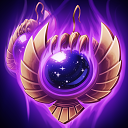 Sphinx's Baubles which raises it to 50%.
Sphinx's Baubles which raises it to 50%.
- Certain items don't stack effects: Example would be
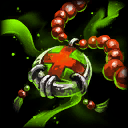 Pestilence and
Pestilence and  Contagion, whose identical healing reduction auras do not stack. Note that other anti-heal effects can combine with these auras...such as
Contagion, whose identical healing reduction auras do not stack. Note that other anti-heal effects can combine with these auras...such as 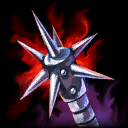 Brawler's Beat Stick,
Brawler's Beat Stick, 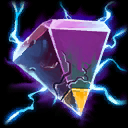 Divine Ruin,
Divine Ruin, 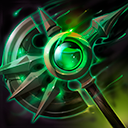 Envenomed Executioner,
Envenomed Executioner, 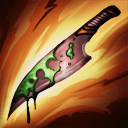 Toxic Blade, and
Toxic Blade, and 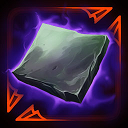 Tainted Steel + glyph upgrades.
Tainted Steel + glyph upgrades.
- Same items don't stack effects: 2 people having
 Divine Ruin won't provide 80% reduced healing.
Divine Ruin won't provide 80% reduced healing.
With that out of the way, let's look at- All 4 cloaks provide 10%, so you would max your CDR, meaning no other potentially good CDR items such as
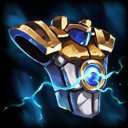 Breastplate of Valor,
Breastplate of Valor, 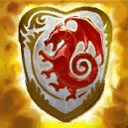 Pridwen,
Pridwen, 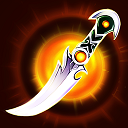 Relic Dagger, etc.
Relic Dagger, etc.
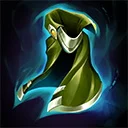 Prophetic Cloak requires stacking, and so is typically built early, and only for gods that can easily build stacks. Not picked up often in certain modes either.
Prophetic Cloak requires stacking, and so is typically built early, and only for gods that can easily build stacks. Not picked up often in certain modes either.
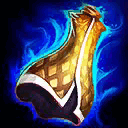 Mantle of Discord is perhaps a bit more niche at this time. It's great if you're always in the middle of a fight and can be good for some squishies as a single protection item...
Mantle of Discord is perhaps a bit more niche at this time. It's great if you're always in the middle of a fight and can be good for some squishies as a single protection item... Magi's Cloak is another that has slightly more niche use, good against high CC as a squishy when you're a god that wants to blink in and do a lot of quick damage and then get out. The defensive glyph upgrade can be helpful for teammates if you're a backline support.
Magi's Cloak is another that has slightly more niche use, good against high CC as a squishy when you're a god that wants to blink in and do a lot of quick damage and then get out. The defensive glyph upgrade can be helpful for teammates if you're a backline support.
So while you CAN build all 4, typically it's not suggested and I highly doubt you'll ever see that type of build in any match.Hope that helps, let me know if you have any other questions.
I know it's been a long time since I've updated this guide. I'm currently in process of updating my Conquest guide, but I'll probably get to this immediately after =)
I actually removed the Bridge Items chapter due to those changes...but it looks like I missed further mention within the guide. I spotted at least one, so I'm changing now, thanks for noticing and letting me know!
- Cost: 2,400 gold (average cost, similar to other items often picked early game (e.g.
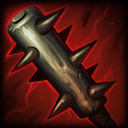 The Crusher)
The Crusher)
- 30 base power
- 10% lifesteal (nice for early sustain, good anytime)
- 20% penetration (% pen more effective later in a match when protections are higher)
- 10% movement speed (great anytime)
- Passive pretty easily activated (have to be willing to unload your entire non-ult kit, so doesn't suit all gods all the time)
- Passive bonus of 40 power and another 10% lifesteal (up to 70 power is really nice)
So firstly, understand unless they nerf this item more, it seems suited to almost any spot in a build, as long as the god in question will get regular use of the passive. Some are building it right after boots, or mid-build.Late-game, it can be seen also as a replacement to boots. And when you replace boots, you're not losing MS at all, because you're getting 2 things to replace boots:
You wouldn't really replace
- Cost: 2,400 gold (average cost, similar to other items often picked early game (e.g.
 The Crusher)
The Crusher)
- 30 base power
- 10% lifesteal (nice for early sustain, good anytime)
- 20% penetration (% pen more effective later in a match when protections are higher)
- 10% movement speed (great anytime)
- Passive pretty easily activated (have to be willing to unload your entire non-ult kit, so doesn't suit all gods all the time)
- Passive bonus of 40 power and another 10% lifesteal (up to 70 power is really nice)
So firstly, understand unless they nerf this item more, it seems suited to almost any spot in a build, as long as the god in question will get regular use of the passive. Some are building it right after boots, or mid-build.Late-game, it can be seen also as a replacement to boots. And when you replace boots, you're not losing MS at all, because you're getting 2 things to replace boots:
You wouldn't really replace
Only arena but so far, in limited testing I have been having mostly fun on Bellona with some of the new items.
The passive was left untouched, which should be good for Solo laners picking it up and skipping teleport.
not much use from it as you will be roaming a lot and not be in lane a lot (and most lanes you will be at will be able to clear them quite easily)
or
an annoyed adc as the lane automatically pushes, having them miss last hits if really unlucky. meanwhile in trades you have to body block better as the opponent has more protections (cause sov or heartward) and sicne the lane pushes you will be playing quite a bit more gankable
Arena Damage Build: Warrior Tabi, Jotunn's Wrath, The Crusher, Titan's Bane/Runeforged, Mantle of Discord, Bloodforge.
Also hydra's is ok on him if you're going ability based.
If you want to go basic attack based you would go something bruiser like: Ninja Tabi, Stone Cutting Sword, Frostbound, Runeforged, Mantle of Discord, Masamune or something along those lines. But im not a fan of it myself.
You don't really ever build executioner, qins or hastened on him. They're not really that good on him or worth it. Though Asi can be sometimes ok.